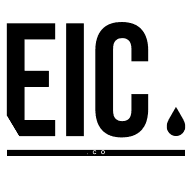How Do You Navigate Ethical Dilemmas in Editorial Decision-Making?
Confronted with the intricate maze of ethical decision-making, a Chief Marketing Officer begins our exploration by discussing how they navigate ethical content dilemmas. While industry leaders provide their professional strategies, we also include additional answers that enrich the conversation, such as the importance of including reader perspectives in decisions. From the adherence to internal codes of conduct to seeking guidance from ethics boards, here are seven thoughtful approaches to handling the moral complexities that editorial professionals face.
- Navigate Ethical Content Dilemmas
- Reject or Redirect Manuscripts Ethically
- Consult Industry Ethical Guidelines
- Seek Ethics Board Guidance
- Balance Stakeholder Interests
- Adhere to Internal Code of Conduct
- Include Reader Perspectives in Decisions
Navigate Ethical Content Dilemmas
One example of managing ethical dilemmas in editorial decision-making at Write Right involved a project where a client requested content that could have misled readers about the benefits of a product. I had to balance the client's needs with our commitment to integrity and transparency. I chose to have an open conversation with the client, explaining our stance on ethical content. We proposed alternative ways to highlight the product's strengths without making exaggerated claims. This approach maintained our ethical standards while still delivering value to the client, reinforcing the trust that underpins our brand.
Reject or Redirect Manuscripts Ethically
Understanding that all manuscripts are important, but sometimes a manuscript does not meet the journal's requirements and goals, we must make the decision to reject it. However, I sometimes send the manuscript back to the authors with instructions to resubmit with a focus that aligns more closely with the journal's mission. It is also important to ensure that the manuscript has not been published previously and that there are no issues with plagiarism.
Consult Industry Ethical Guidelines
In the complex realm of editorial decision-making, it's crucial to regularly consult recognized ethical guidelines that serve as an industry benchmark. This practice keeps editorial judgment aligned with standards respected across the industry. It creates a structured framework to navigate through tough choices while maintaining a sense of responsibility to the public.
Such guidelines can also help clarify situations where moral solutions are not immediately apparent. When faced with a difficult editorial decision, taking the time to review these guidelines is key. Reviewing these standards can provide clear guidance, so engage with them deeply to ensure ethical clarity.
Seek Ethics Board Guidance
An impartial ethics board can offer invaluable insights when editorial decisions become ethically ambiguous. The board consists of individuals who can provide diverse perspectives and are not influenced by the outcomes of the decisions being made. They help to ensure that decisions are made fairly and without bias, allowing for a thorough exploration of the ethical issues at hand.
Their role is to guide those making editorial decisions toward outcomes that reflect ethical principles. When confronted with an ethical challenge, seeking guidance from such a group can help to bring objectivity and balance to the decision-making process. Reach out to an ethics board to navigate these waters with greater confidence and fairness.
Balance Stakeholder Interests
Editorial decision-making demands a delicate balance between numerous interested parties and the core values of journalism. An editor must weigh the potential impact of decisions on advertisers, readers, and the subjects of news stories against the enduring principles of truth-telling and accountability. It's a balancing act that requires careful thought and a steadfast commitment to those principles that define journalistic integrity.
This approach ensures editorial choices support both the needs of stakeholders and the mission of journalism. To achieve such a balance, consider each stakeholder's interests thoughtfully and prioritize journalistic integrity to guide your decisions. Let this balance be your compass in the editorial landscape.
Adhere to Internal Code of Conduct
Developing and adhering to a strict internal code of conduct is essential in managing editorial decisions ethically. This code serves as a moral compass for the editorial team, outlining clear expectations for conduct and decision-making processes. It ensures consistency in how decisions are approached and provides a baseline for accountability when ethical questions arise.
Moreover, an internal code of conduct helps protect the integrity of the publication and fosters trust with its audience. Anchoring every decision to this code is fundamental when navigating complex ethical territories. Make sure to reinforce the importance of the internal code to maintain the highest standard of ethical journalism.
Include Reader Perspectives in Decisions
Implementing a transparent decision-making process that includes the perspectives of readers helps in fostering an open dialogue around ethical considerations. By inviting reader participation, editorials are not only democratized but also become more reflective of the community they serve. This inclusivity helps in highlighting diverse viewpoints and providing a platform for concerns to be raised and addressed.
Maintaining transparency builds trust between the publication and its readers and can enhance the credibility of the editorial team. To ensure decisions are made with the welfare of the readership in mind, always keep the lines of communication open with your audience. Encourage reader involvement to help shape ethical editorial practices.



